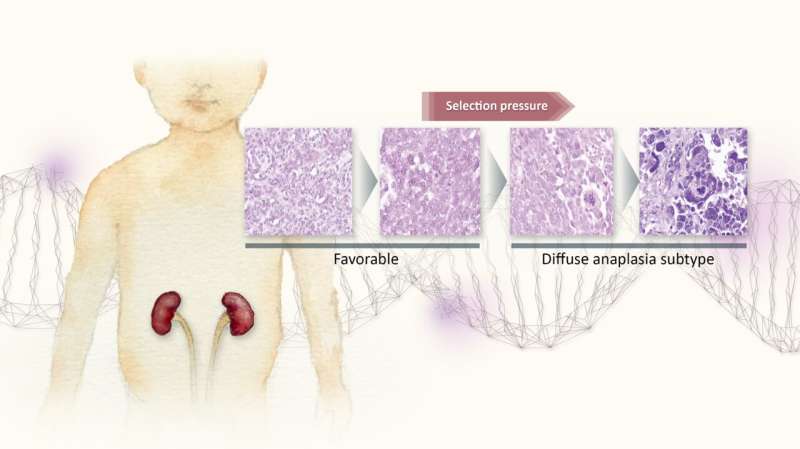This article has been reviewed according to Science X's editorial process and policies. Editors have highlighted the following attributes while ensuring the content's credibility:
fact-checked
trusted source
proofread
Why a dangerous subtype of Wilms tumor is so resistant to chemotherapy

An international team, led by researchers at Nagoya University in Japan, may have determined why the diffuse anaplasia (DA) subtype of Wilms tumor (WT) resists chemotherapy. This subtype grows even when it has a high burden of DNA damage and increases the mutation rate of tumor protein 53 (TP53), a gene that plays a critical role in the regulation of cell growth and division. The team's findings, published in Modern Pathology, suggest new ways to treat this subtype.
WT, also known as nephroblastoma, is the most common childhood cancer originating in the kidney. Fortunately, the survival rate of adolescents affected by this disease is increasing. However, 5–10% of WT patients are diagnosed with the DA subtype.
Cells of the DA subtype have an unusual structure that leads them to divide rapidly and invade the surrounding tissue. Patients with this subtype often become much sicker and face difficult treatment because the tumor is often resistant to chemotherapy.
To better understand the resistance of the DA subtype to chemotherapy, a group of researchers led by Kaname Uno, a Ph.D. student in the Nagoya University Graduate School of Medicine and Lund University Joint Degree Program, compared areas of tumors with and without DA.
The group found that, in response to chemotherapy, DA WT continued to grow even if it had a high burden of DNA damage and deletions of DNA segments (known as copy number aberrations, or CNAs). Since chemotherapy works by causing DNA damage, the ability of the damaged tumor to grow may help explain its resistance to the treatment.
Uno and his colleagues also looked at the TP53 gene, which creates a protein that prevents the division of cells with damaged DNA. In cancer patients, TP53 increases the development of cancer because tumors use altered DNA to create conditions that help their growth.
The researchers found that 95% of areas that showed high DA also had mutations in the TP53 gene, suggesting that TP53 mutations may play a key role in driving DA WT proliferation.
However, unexpectedly, the group also found that even areas lacking DA had unusual features. Almost half of the non-DA areas had TP53 mutations, and one non-DA region grew even though it had relatively high DNA damage.
They concluded that even in areas lacking DA, selection pressure existed for mutation of the TP53 gene. As mutation of the TP53 is associated with the DA subtype, this may allow all these areas to potentially become DA.
As Uno explained, "Our results suggest that WTs 'grow bad.' That is, they develop DA histology, rather than being 'born bad,' meaning they either have DA or are non-DA from the start."
This key finding suggests a theory that explains why WT are so difficult to treat. Uno explained, "This suggests that DA histology gradually emerges by accumulating burdens of DNA damage and CNAs. These conditions create selection pressures for TP53 mutations. When WT cells acquire TP53 mutation, they can grow under chemotherapy, even with a very high burden of DNA damage and CNAs."
This research may suggest treatment strategies for the DA subtype. Most chemotherapies work by inducing DNA damage, but DA WT cells have TP53 mutations that allow them to continue growing even with a high level of DNA damage. Disrupting this process could potentially offer treatment to patients with this subtype of this terrible disease.
More information: Kaname Uno et al, A Gradual Transition Toward Anaplasia in Wilms Tumor Through Tolerance to Genetic Damage, Modern Pathology (2023). DOI: 10.1016/j.modpat.2023.100382




















